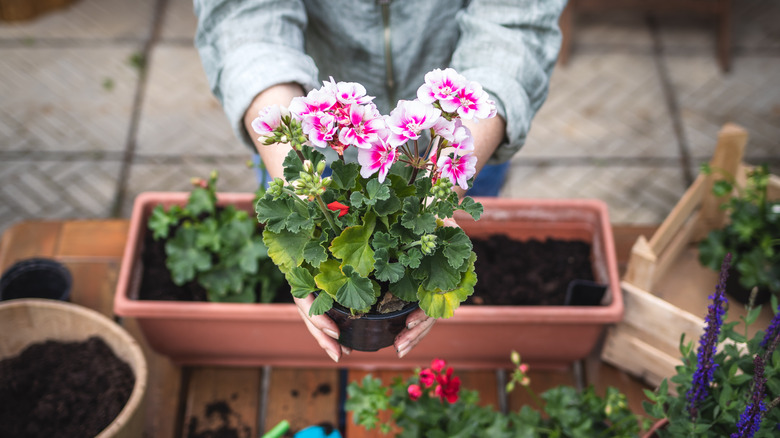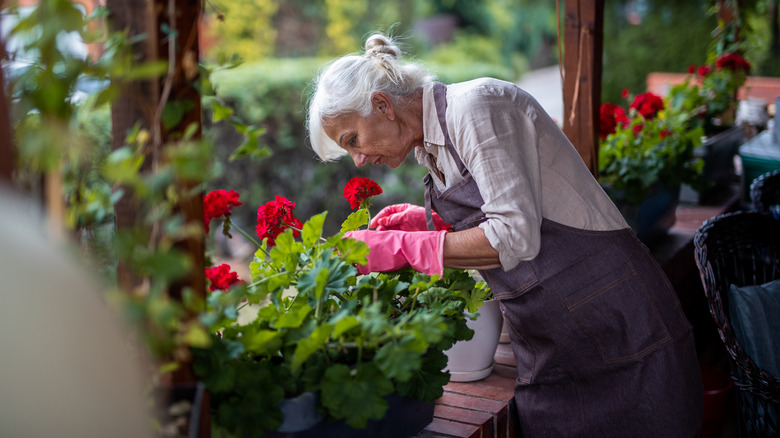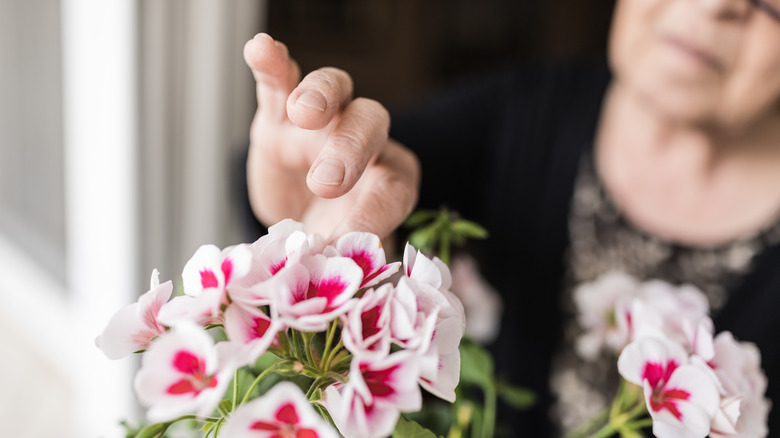Are Geraniums Perennials? How To Keep Them Through Winter
Geraniums are a celebrated favorite in gardens and patios around the world. However, despite their popularity, there's often a cloud of confusion surrounding their classification and longevity. Suppose you're scratching your head over whether these plants are perennials and pondering the best strategy for winter care. In that case, the key lies largely in the specific type of geranium — or pelargonium — you've chosen to cultivate. To clear things up, it's important to note that only the cranesbill, also known by its scientific name as the hardy geranium, is actually a "true" geranium. The other captivating varieties that you frequently encounter in garden centers are pelargoniums. Let's dive a bit deeper into the nuances of geranium types to help you better understand what you're growing.
Hardy geraniums are indeed true perennials. They are a remarkably diverse group, encompassing an impressive range of roughly 700 varieties, each with its own characteristics like flower color, size, and growth habit. Among this rich diversity, some popular standouts include 'Rozanne,' macrorrhizum, sanguineum, and pratense. As for pelargoniums, the variety is equally captivating. Though they belong to a larger family of over 200 species, these plants are predominantly sorted into five main types: zonal, ivy, regal, scented-leaf, and angel. Familiarizing yourself with the differences between these categories is vital for tailoring your care approach when growing geraniums. This will further help you make more informed decisions about how to sustain their beauty through the challenging winter months.
Winter survivability: pelargoniums vs. hardy geraniums
Pelargoniums, which hail from the warmer regions of South Africa, are well-suited to tropical climates. Despite their inherent affinity for warmth and sunshine, these plants have a crucial vulnerability: they are frost-tender, which means they cannot survive freezing temperatures. This sensitivity to cold makes them less resilient in chillier climates. However, in temperate environments, particularly those falling within USDA hardiness zones 10 to 12, pelargoniums can indeed be cultivated as perennials, flourishing year after year. In regions that don't meet these climate criteria, pelargoniums are commonly grown as annuals, gracing gardens with their vibrant colors and intricate foliage for a single growing season before succumbing to the cold.
Switching focus to the other side of the spectrum, we find the hardy geraniums, also known as cranesbill. These are the authentic geraniums, capable of tolerating some levels of cold and potentially thriving for many years. Remarkably, they can withstand temperatures as low as minus 20 degrees Fahrenheit. While they offer a beautiful but less vivid color range compared to their pelargonium counterparts, their leaves also lack the striking variegation often seen in the latter. Size-wise, hardy geraniums are more modest, maxing out at around 24 inches in height. In contrast, some pelargonium types can reach a lofty height of up to 48 inches. Despite these differences, hardy geraniums promise long-term satisfaction when planted in suitable climates, and there are measures you can take to ensure their survival if the weather takes a harsh turn.
Overwintering strategies: making it through the cold
Now that you know the different types of geraniums, let's further explore the best strategies for keeping them alive during the colder months. If you're dealing with hardy geraniums, they can remain outdoors throughout the winter, thanks to their ability to tolerate significant cold. However, cutting off the stems can provide extra protection against powdery mildew. Pelargoniums require a different approach for winter survival — you can overwinter these plants indoors to extend their lifespan. Before the first frost hits, gently dig them up, shake off the soil, and place them in pots. Move the pots indoors near a sunny window, where they can get at least four to six hours of sunlight.
Keep the temperature consistent and water sparingly, as they are in a semi-dormant state and don't require as much moisture. It's essential to also reduce fertilizing during these months — ideally, aim to fertilize every 4-6 weeks. Once you approach the end of winter and frost warnings become a thing of the past, begin acclimating your pelargoniums to the outdoor environment by placing them outside for a couple of hours each day. Gradually extend this time, and when you're confident that the frost is truly behind you, it's time to replant them outside. All in all, taking these precautions allows you to enjoy the beauty of both pelargonium and hardy geraniums year after year. When warmer days return, your extra effort in winterizing your plants will be rewarded with stunning blooms and lush foliage.


